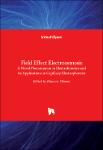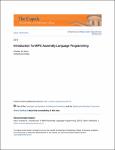Search
Author
- Osman, Ahmed I. (5)
- Daqing, Ma (3)
- Jorgensen, Ed (3)
- Li, Yan (3)
- next >
Subject
- kinh tế (26)
- Economics (12)
- programming (10)
- XRD (10)
- next >
Date issued
- 2020 - 2025 (2125)
- 2010 - 2019 (128)
- 2000 - 2009 (9)
- 1999 - 1999 (1)
Search Results
Since the mid-1980s, Japan, which was a leading competitor in the world’s manufacturing sector, tried to transform itself to an economy with domestic demand-led mature growth. The ensuing bubbles, busts, and banking crisis, however, left the country chronicle deflation and stagnation. This book analyzes why the Japanese authorities could not avoid making choices that led to this outcome. This report describes policy responses to the boom, bust, crisis, and recovery Japan experienced during the two decades from 1986 to 2004. One hundred and fifty years ago, Japan started to westernize itself after the two centuries of isolation. Since then, it has made two miracles and two major mistakes. |
This Edited Volume is a collection of reviewed and relevant research chapters, offering a comprehensive overview of recent developments in the field of Quantum Electronics. The book comprises single chapters authored by various researchers and edited by an expert active in the field. All chapters are complete in itself but united under a common research study topic. This publication aims at providing a thorough overview of the latest research efforts by international authors on Quantum Electronics, and open new possible research paths for further novel developments. |
Made in Africa presents the findings of original field research into the design, practice, and varied outcomes of industrial policy in different sectors in Ethiopia. The book explores how and why the outcomes of industrial policy are shaped by particular factors in different industries. The findings are discussed against the backdrop of ‘industrial policy’, which has recently found renewed favour among economists and international organizations, and of the history of thought about and practice in industrialization. The book seeks to learn from the failures and successes in the cement, leather and leather products, and floriculture sectors, all of them functioning under the umbrella of a single industrial strategy. Moreover, it argues that success lies in the interactions among polic... |
Part I: A power and systems approach: Systems thinking changes everything, Power lies at the heart of change, Shifts in social norms often underpin change. Part II: Institutions and the importance of history: How states evolve, The machinery of law, Accountability, political parties, and the media, How the international system shapes change, Transnational corporations as drivers and targets of change. Part III: What activists can (and can’t) do: Citizen activism and civil society, Leaders and leadership, The power of advocacy. Part IV: Pulling it all together: A power and systems approach to making change happen. |
This open access book asks why and how some of the developing countries have “emerged” under a set of similar global conditions, what led individual countries to choose the particular paths that led to their “emergence,” and what challenges confront them. If we are to understand the nature of major risks and uncertainties in the world, we must look squarely at the political and economic dynamics of emerging states, such as China, India, Brazil, Russia, and ASEAN countries. Their rapid economic development has changed the distribution of wealth and power in the world. Yet many of them have middle income status. To global governance issues, they tend to adopt approaches that differ from those of advanced industrialized democracies. At home, rapid economic growth and social changes put... |
"Think Python is a concise introduction to software design using the Python programming language. Intended for people with no programming experience, this book starts with the most basic concepts and gradually adds new material. Some of the ideas students find most challenging, like recursion and object-oriented programming, are divided into a sequence of smaller steps and introduced over the course of several chapters.
This textbook has been used in classes at Bard College, Olin College of Engineering, University of California, Santa Barbara, University of Maine, University of Northern Colorado." |
Electrophoresis is defined as the transport of electrically charged particles in a direct current electric field. Electrophoresis has been around for more than a century as a phenomenon in electrokinetics. Field effect electroosmosis is a novel phenomenon in electrokinetics that adds a new dimension in capillary electrophoresis. In this book, field effect electroosmosis is introduced, and a beautiful spectrum of applications of electrophoresis was presented. |
"This book was written to introduce students to assembly language programming in MIPS. As with all assemblylanguage programming texts, it covers basic operators and instructions, subprogram calling, loading andstoring memory, program control, and the conversion of the assembly language program into machine code.
However this book was not written simply as a book on assembly language programming. The larger purposeof this text is to show how concepts in Higher Level Languages (HLL), such as Java or C/C++, arerepresented in assembly. By showing how program constructs from these HLL map into assembly, theconcepts will be easier to understand and use when the programmer implements programs in languages likeJava or C/C++. Concepts such as references and variables, registers, binary an... |
This open access book provides a readable narrative of the bubbles and the banking crisis Japan experienced during the two decades between the late 1980s and the early 2000s. Japan, which was a leading competitor in the world’s manufacturing sector, tried to transform itself into an economy with domestic demand-led mature growth, but the ensuing bubbles and crisis instead made the country suffer from chronicle deflation and stagnation. The book analyses why the Japanese authorities could not avoid making choices that led to this outcome. The chapters are based on the lectures to regulators from emerging economies delivered at the Global Financial Partnership Center of the Financial Services Agency of Japan. |
My purpose in writing this book is to give readers a view into the work of managing information technology in schools. IT professionals will notice differences (some nuanced and some significant) between the needs and expectations of IT users in business and IT in school. With the more complete and more accurate concept the nature of the computing environment necessary for successful schooling, which I intend to provide through this book, IT professionals will be better prepared to meet those needs. Educators will also benefit from this book by clarifying the nature of their IT needs and how these may be different from those that are familiar to IT professionals who are hired to work in your school. |










